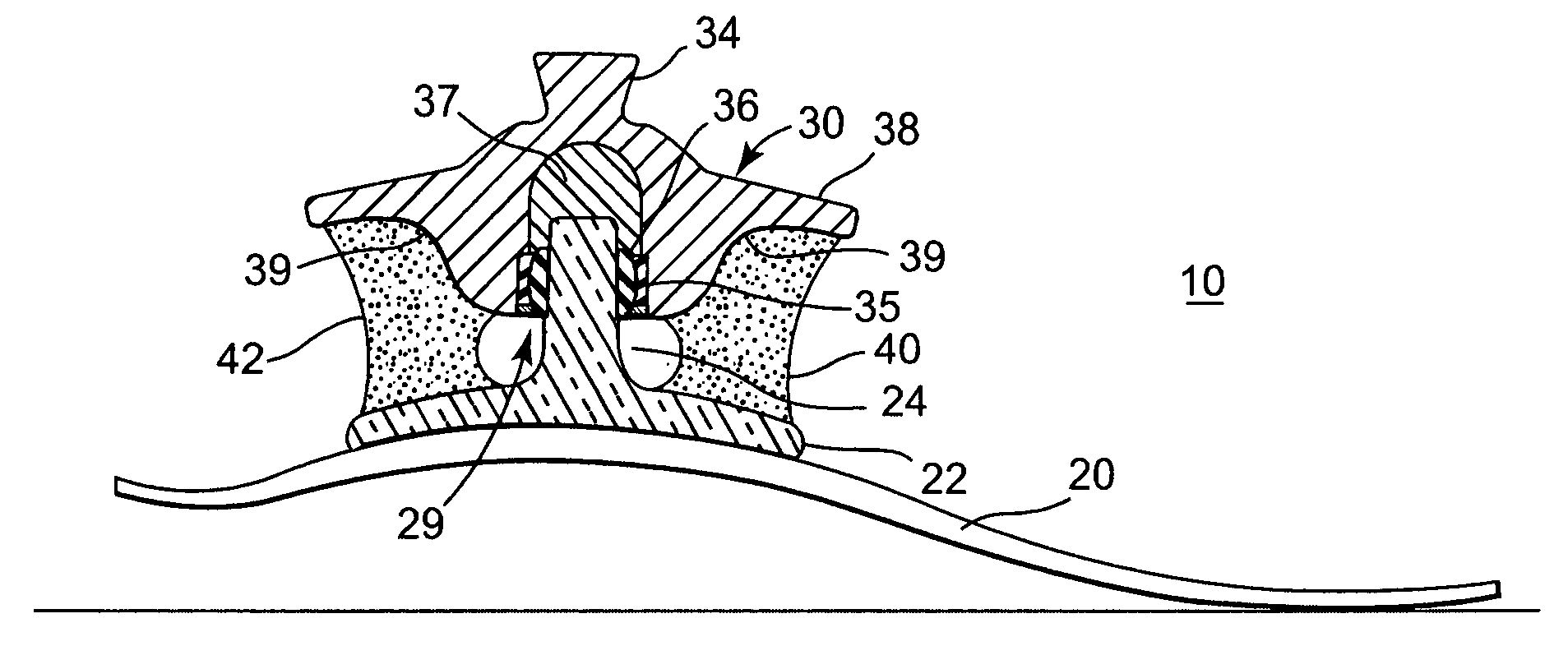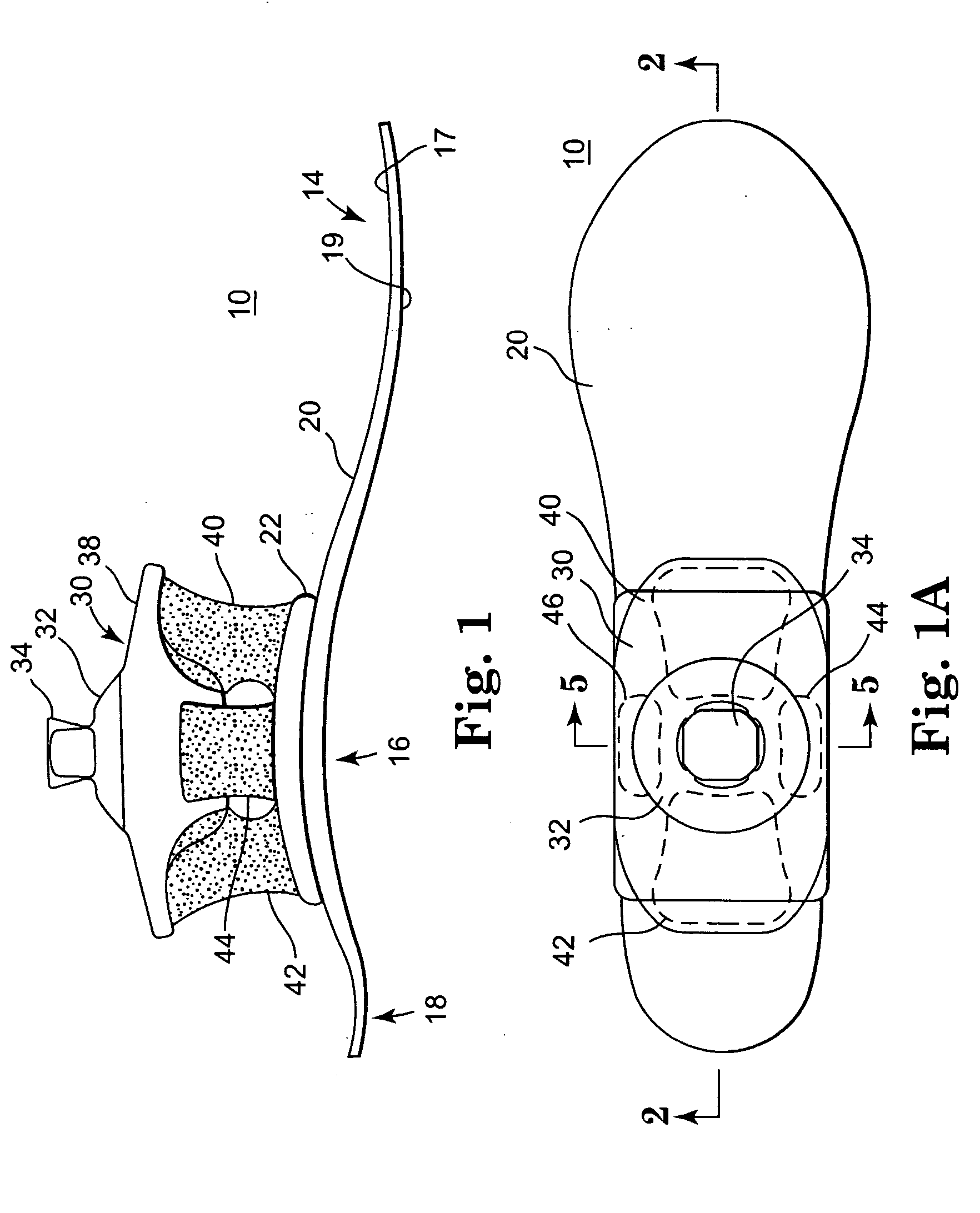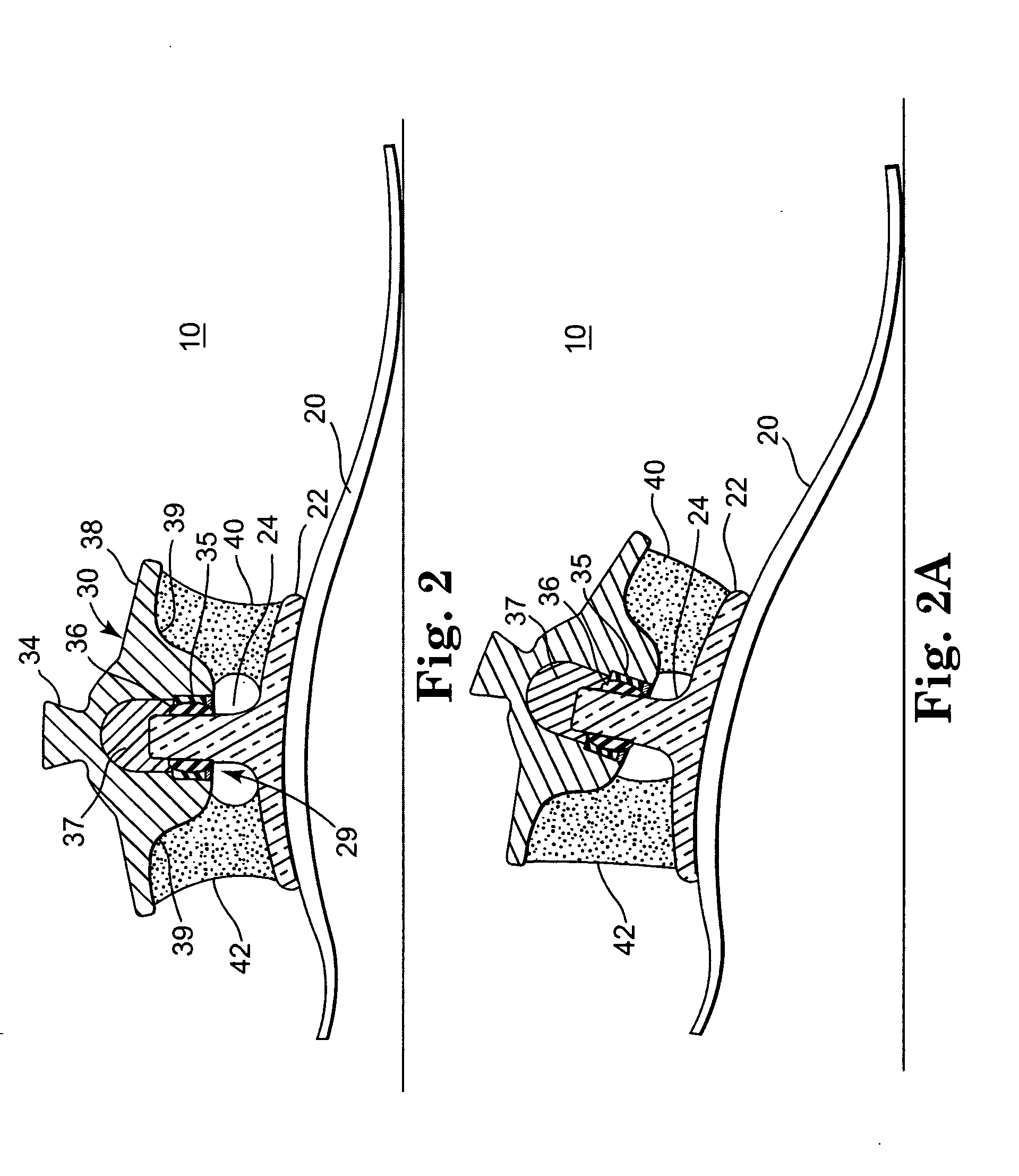Multi-axial prosthetic foot
a multi-axial, prosthetic foot technology, applied in the field of prosthetics, can solve the problems of limited capacity, difficult and expensive, limited energy storage and return capabilities, etc., and achieve the effect of increasing the energy storage and return function
- Summary
- Abstract
- Description
- Claims
- Application Information
AI Technical Summary
Benefits of technology
Problems solved by technology
Method used
Image
Examples
Embodiment Construction
[0037] Referring now to FIGS. 1 and 1A, there shown is a side view of the prosthetic foot 10 of the present invention. Lower member 20 provides a base for upper member 30 on which the wearer (not shown) of the prosthetic foot 10 will stand. The lower member 20 includes anterior, medial, and posterior portions 14, 16, and 18. In one embodiment, the lower member 20 can be roughly the size of a human foot and shaped similarly to a human foot. The width of the lower foot member 20 can be variable along its length. In the illustrated embodiment, the width of its anterior portion 14 can be greater than the widths of its medial and posterior portions 16 and 18. In another embodiment, the widths of its anterior and posterior portions 14 and 18 can be greater than the width of its medial portion 16 (not shown). In yet another embodiment, the width of the lower foot member 20 can be constant along its length (not shown).
[0038] The lower foot member 20 includes a top surface 17 and a bottom s...
PUM
 Login to View More
Login to View More Abstract
Description
Claims
Application Information
 Login to View More
Login to View More - R&D
- Intellectual Property
- Life Sciences
- Materials
- Tech Scout
- Unparalleled Data Quality
- Higher Quality Content
- 60% Fewer Hallucinations
Browse by: Latest US Patents, China's latest patents, Technical Efficacy Thesaurus, Application Domain, Technology Topic, Popular Technical Reports.
© 2025 PatSnap. All rights reserved.Legal|Privacy policy|Modern Slavery Act Transparency Statement|Sitemap|About US| Contact US: help@patsnap.com



